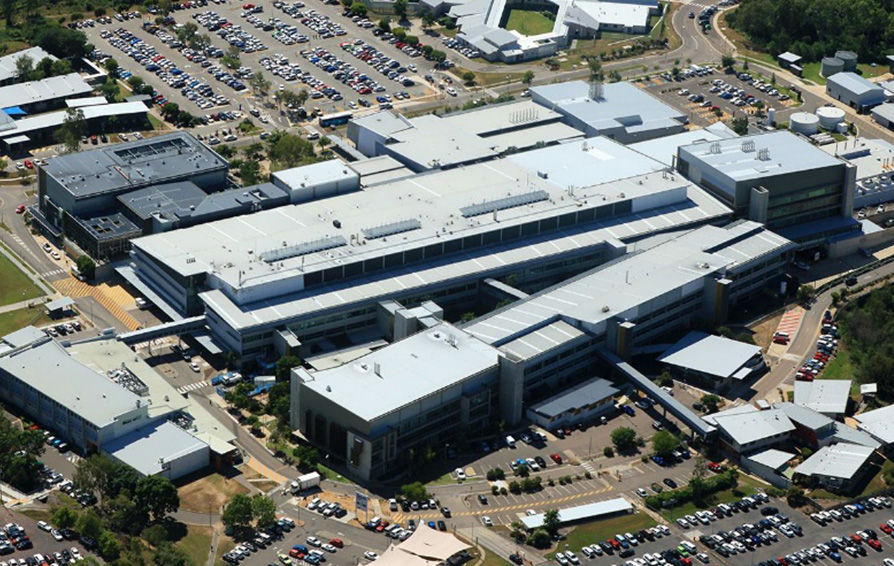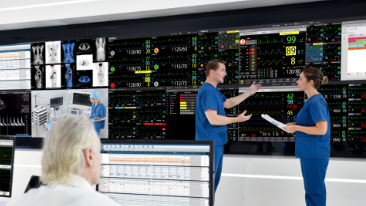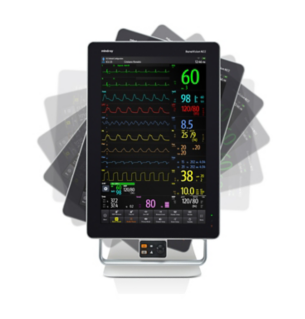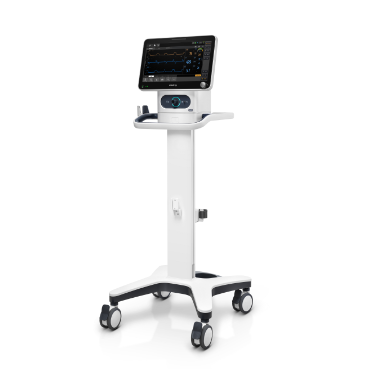When the new patient monitor for the last ICU bed finished its final data calibration, ICU Clinical Nursing Consultant Carly Evans and her team celebrated a significant a milestone in the "mid-flight refuelling" system overhaul at Townsville University Hospital (TUH). In just 48 hours, this healthcare hub had successfully upgraded the entire hospital’s patient monitoring network.
“This is a remarkable achievement!” Carly exclaimed, reflecting on the joint effort between TUH and Mindray.
The urgency for this overhaul was driven by the hospital’s unique role as the only tertiary referral centre in northern Australia. It serves not only Townsville’s 260,000 locals but also 720,000 residents from the Papua New Guinea border to the Coral Sea coast.
What is often overlooked is this critical reality: The density and quality of medical services provided by TUH to North Queensland far surpass the operational capacity implied by its physical service radius.
Breaking Physical Boundaries
with Intelli-Digital Transformation
Townsville University Hospital is the only teaching and tertiary referral hospital in Northern Queensland, as well as being the fourth largest hospital in the state. With a capacity of 863 beds and over 6,600 staff members, it plays a crucial role in delivering healthcare in the region, particularly acute care.
“The fact that none of our neighbours can provide the services that we do is a real challenge for us.” Each year, TUH receives over 1,900 acute patient transfers. Carly explained that there is a pressing need to provide high-quality care to more people in a more efficient and flexible way.
During the overhaul of the comprehensive monitoring system in 2024, more than 800 new patient monitors, 100 telemetry devices and over 20 ventilators from Mindray were installed to help mitigate operational strain. Notably, this upgrade went beyond mere device replacement to enable the hospital to achieve 'temporal-spatial efficiency' in healthcare delivery through extensive connectivity and full digitalisation.
TUH's customised M-Connect solution prioritises the continuous transmission of medical data and is tailored to diverse clinical workflows. It has established a centralised monitoring network throughout the hospital, facilitating real-time collaborative care and enhancing overall efficiency.
For example, when patients are transported to the ER by ambulance, the cardiology team can remotely access their data in real time for an immediate diagnosis, enabling critical interventions to be carried out earlier in the care pathway.
Carly Evans
Clinical Nursing Consultant, ICU Department, Townsville University Hospital
Prior to Mindray, we were confined to a physical space. In mass casualty situations, we had to designate overflow areas. With Mindray, we can operate wirelessly, creating virtual bed spaces with MetaVision. We can easily change bed IDs on the Mindray monitors and use transport monitors to establish a virtual ICU anywhere in the hospital. This flexibility allows us to support our patients wherever needed.
Paul Mateos
Clinical Nursing Consultant, Emergency Department, Townsville University Hospital
Daily workflows in the emergency department have transformed with the Mindray units. The compact N1 monitors allow us to move equipment seamlessly between triage, the recess room, and the patient’s bedside. We can even use the same monitor when transferring patients to the ICU or wards, ensuring all information stays with them throughout their journey.
Innovation within Reach:
Bridging Cultural Gaps with Technology
The advanced equipment and connected solutions not only enhance the hospital's capacity for in-house treatment. Given TUH's coverage of a vast 150,000-square-kilometre area and the dispersed nature of Queensland’s population, it has also enabled effective healthcare services on a large scale.
This sheds light on the fact that Queensland is home to Australia's second largest indigenous population, with 21,000 people recorded in the 2021 census. Many of these individuals live in remote rural communities with limited access to adequate healthcare services due to historical and cultural complexities.
Kieran Keyes
CEO, Townsville University Hospital
As a health service, we are committed to health equity. Our significant Indigenous population, both locally and across North Queensland, demands that we focus on the journey from their communities to our health services and back home, ensuring culturally sensitive care that bridges the life expectancy gap.
Paul Woodhouse
General Manager of Mindray Australia
It’s well documented that patients recover better at home, surrounded by family. Many communities here, especially in remote areas, prefer to receive care in their home environment, supported by their families.

Townsville Hospital prioritizes inclusive partnerships with Aboriginal and Torres Strait Islander communities.
Technological advancement now offers new possibilities for sociocultural integration. The M-Connect IT Solution has enabled the TUH-led medical alliance to establish robust connectivity with peripheral rural health posts. This infrastructure supports real-time remote monitoring, telehealth interventions, and centralised health record management across the network.
As a result, geographic barriers are being transcended as decentralised communities are synchronizing with centralised care ecosystems through digital pathways. This integration not only enhances accessibility, but also allows local residents to enjoy high-quality, personalised care tailored to their unique needs.

Mindray actively participates in the digital upgrade of local healthcare facilities in Ingham, Magnetic Island, and Palm Island in collaboration with Townsville Hospital and Health Services (HHS).
Collaborative Growth:
Charting a New Chapter in Australian Healthcare
For TUH, Mindray’s involvement extends far beyond that of a one-off equipment provider. Instead, the company plays a proactive role in building a solid partnership with the hospital and regional healthcare services, drawing on the expertise of both parties to plan and execute the complicated transformation project together.
Michael Barber
IT Director, Townsville University Hospital and Health Service
Mindray really came on board in helping us solve the issue of how to roll this out. They brought the manpower to help us do that. They have also supported our Biomedical Technology Services team by providing education and ensuring that they understood how the solution worked and how it needed to be implemented.
With the solid foundation laid by this “side by side work in all areas”, TUH is looking to further strengthen its pioneering position in innovative healthcare delivery. Further collaborations are expected to realise the full potential of advanced data analytics to enhance predictive patient monitoring and resource management, and integrating more information support solutions, such as medical imaging solutions. There will also be a further expansion of telemedicine services to cover more patients in remote areas.
Paul Woodhouse
General Manager of Mindray Australia
Our collaboration with TUH is a prime example of Mindray's commitment to working alongside our customers to overcome their specific challenges by providing tailored solutions, rather than adopting a one-size-fits-all strategy. We believe that cutting-edge intelligent digital solutions are only effective when insights from hospitals, clinical teams and solution providers are integrated. It is through this collaborative development process that we create future-proof solutions to meet both current and future needs.























